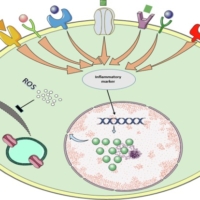Anxiety Disorder (series 6), specific phobia
Hello, welcome to Mind Matters with Dr Ogochukwu Ojiaku. In the last series of anxiety disorders, we discussed Social Anxiety, its presentation, diagnostic criteria, clinical management, and comorbidities, s.
If you have not watched the 1st, 2nd 3rd 4th, and the 5th series already please endeavor to do so.
In other, to better understand our final series on anxiety disorders, Today, we will be discussing Specific Phobia, formerly known as Simple Phobia.
Specific phobia is a lasting, unreasonable fear caused by the thought or presence of an object situation, or concept that has little or no real danger.
The fear is observed.
Adults recognize that fear is excessive and unreasonable Increases to the unreasonable nature of the fear increase with age Risk.
Factors of specific phobia are Past exposure to a traumatic event Such as having been bitten by a dog or having observed another being bitten by a dog, Excessive transmission of information Such as constant warning from parents about the danger of a specific object or event Genetic loading.
This means having a family history or a family member that has a specific phobia Assessment, involves collecting history to the following.
The CO’, intent of phobias, varies with age, culture, and ethnicity Assessment, is also done to see if there’s significant, functional impairment, such as full avoidance of school related to fear of encountering spiders.
This is assessed because, for the diagnosis to be significant, functional impairment, also assessment is done to see whether exposure to the feared object or situation immediately provokes clinically significant anxiety. Anxiety is related to the degree to which the feared object of the situation is physically close to the individual or the degree to which escape from the situation or object is possible.
This type of anxiety may manifest in children as crying freezing, tantrums, or excessive clinging behavior.
Also, assessment is done to see if the individual engages in avoidant behavior to prevent a reaction to the object or situation or if the person endures the object or situation with dread.
There are five subtypes of specific phobia: 1 Situational phobia, 2 nature and environment 3, blood injection, injury, type, 4, The animal type, and others.
So I would like to make it clear here that someone can experience more than one subtype at a time, also having fear of a particular event or object in a subclass predisposes, an individual to other objects or situations in the same subclass Take for instance if Someone has fear of rats that increases their fear of spiders.
Phobia would like to briefly explain these types of phobia.
1.
The first one, which is also the first and most common type of specific phobia in adults, is Situational phobia, which is the kind of lasting phobia caused by certain situations such as driving flying being enclosed in a space as tunnels or bridges.
2.
The 2nd one and the 2nd most common type of adult phobia is the natural environment, which is the kind of fear caused by things in the natural environment, thunderstorms lightning, water, or heights. Second, the most common adult form: 3, The third one, which is also the third most common type of phobia, is the blood injury InjectionType.
This is caused by fear of, seeing blood, fear of injury, fear of injection, or undergoing other medical procedures.
The final one is others which are caused by a range of other stimuli, such as fear of vomiting or fear of contracting a specific illness.
Physical Exam Findings in specific phobia are th and mentalities the findings in other types of anxiety, Mental Status.
Exam Findings are Consistent with anxieties as well, However, thought content is consistent and specific to phobia Comorbidities include Avoidance Behavior, which is seen in PTSD or Post, traumatic, stress, disorder, OCD or obsessive-compulsive disorder, separation, anxiety disorder, and other Psychotic disorders.
Clinical Management of specific phobia follows the general management of anxiety disorders, which involves Medication and medication treatment, So medication treatment involves selecting medication from the class of antidepressants called SSRIs or Selective serotonin reuptake inhibitors such as Prozac and Zoloft Medications from the class called TCA S or Tricyclic antidepressants such as Amitriptyline can also be used in the treatment of specific anxiety.
Benzodiaza pines such as Xanax and Ativan can be used for a short time.
Treatment of anxiety, also Medication treatment involves the use of CBT or cognitive behavioral therapy, the use of biofeedback, or a type of therapy called desensitization.
So this is our final series of ety disorders.
We have gone through all types of anxieties, including panic, disorder, social and, cty, generalized anxiety, disorder, agoraphobia, and finally, specific phobia. So if you have not watched any of those series already please endeavor to do so, the videos are, on our website, Mind Matters with Dr Ogochukwu Ojiaku, so please feel free to utilize those resources as needed.
Of course, we’ll be moving on to another topic.
Maybe depression I don’t know yet but hey if there’s any topic, you are interested in us addressing or treating.
Please send us your questions.
We’ll consider the topic as we forge ahead to other things in the future.
Our email address is located in the description, so please feel free to send us your general questions.
We’ll randomly select questions to be addressed in our future videos.
So, like comment subscribe, and share this video with your friends and your families, Thank you for watching.
I am Dr Ogochukwu Ojiaku.
Thank you…
Use VNDT5OFF for $5 OFF Guaranteed for minimum of… ᴠɪᴅᴇɴᴛʟʏ ᵇʸ ᵉˣᵖˡᵃᶦⁿᵈᶦᵒ ʳᵉᵛᵒˡᵘᵗᶦᵒⁿᶦᶻᵉ ʸᵒᵘʳ ᵛᶦᵈᵉᵒˢ ʷᶦᵗʰ ˢʷᶦᵖᵉ & ˢⁿᵃᵖ: ᵉᶠᶠᵒʳᵗˡᵉˢˢˡʸ ᶜʳᵉᵃᵗᵉ ᶜᵒⁿᵗᵉⁿᵗ ᵗʰᵃᵗ ᵉⁿᵍᵃᵍᵉˢ & ˢᵉˡˡˢ ʷᶦᵗʰ ᵃᶦ⁻ᵖᵒʷᵉʳᵉᵈ ˢᶜʳᶦᵖᵗˢ ᵘⁿˡᵒᶜᵏ ᵗʰᵉ ᶠᵘˡˡ ᵖᵒᵗᵉⁿᵗᶦᵃˡ ᵒᶠ ᵛᶦᵈᵉᵒ ᵐᵃʳᵏᵉᵗᶦⁿᵍ: ᵗʰᵉ ᵒⁿˡʸ ˢᵒᶠᵗʷᵃʳᵉ ʷᶦᵗʰ ˢʷᶦᵖᵉ & ˢⁿᵃᵖ ᵉᵃˢᵉ ᵃⁿᵈ ᵃᶦ ˢᶜʳᶦᵖᵗ ᵍᵉⁿᶦᵘˢ—ᵗʳᵃⁿˢᶠᵒʳᵐ ᵛᶦᵉʷˢ ᶦⁿᵗᵒ ᵛᵃˡᵘᵉ ᵃⁿᵈ ᵛᶦˢᶦᵗᵒʳˢ ᶦⁿᵗᵒ ᵇᵘʸᵉʳˢ.
















